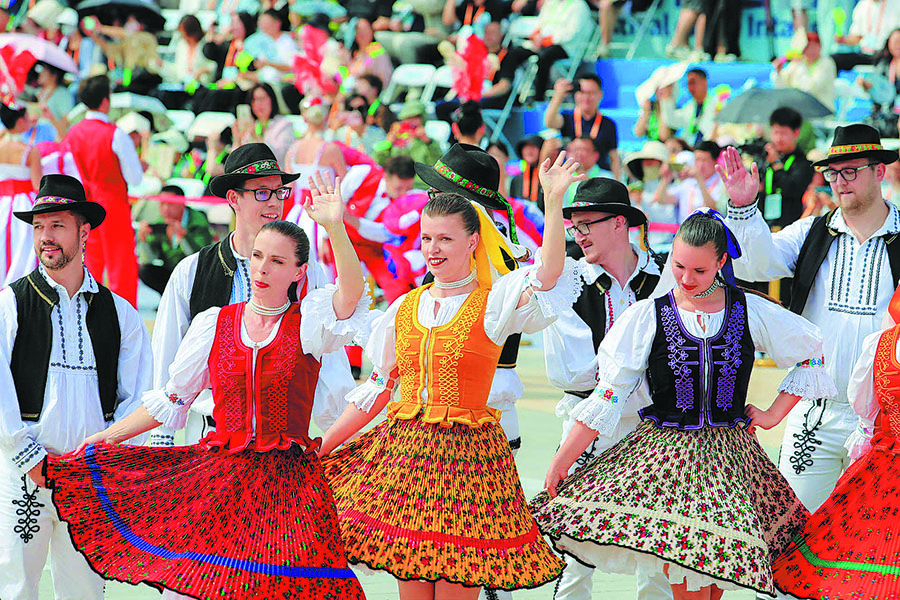Tradition without borders


Artists from 60 countries create intricate textiles, handcrafted treasures at festival, Yang Feiyue reports in Chengdu.
Several elegant female figures stand in a graceful procession on a long scroll of painting, their silhouettes connected by flowing rivers and mountain ranges that trace the geographical contours of their homelands from Poland to China.
It continuously stopped visitors in their tracks to the 9th International Festival of the Intangible Cultural Heritage in Chengdu, Sichuan province, that ran from May 28 to Tuesday.
Iwona Tamborska, brain behind the artwork, used architectural elements, textiles, and iconic symbols from each country to adorn her subjects.
"Women were chosen to symbolize the countries because they represent peace, harmony, and beauty — qualities aligned with the peaceful nature of Silk Road trade," the jewelry artist from Poland says, adding that women have also historically contributed to culture through art and craftsmanship.
"The silk thread that connects each woman across the canvas is a metaphor for the interconnectedness of the cultures along the Silk Road," she says.
Having visited China multiple times over the past 14 years, and with an academic background in comparative cultural studies focusing on East Asia, Tamborska has long been captivated by the country's rich traditions and visual language.
When approached by the College of Communication Science and Art, Chengdu University of Technology, to co-create a project for the ICH festival, she readily went on board.
Qiao Yu from the college reached out to Tamborska as they had worked together in art design before.
"We saw an opportunity to merge our expertise and create something innovative," Qiao says.
The partnership evolved organically, with the Polish designer contributing conceptual frameworks while the Chinese team handled cultural adaptations.
"It was a mutual learning process, and key modifications were made to respect cultural symbolism in different countries," Qiao notes.
"We deferred to each other's cultural expertise. For European elements, we prioritized her input, while she respected our adjustments for Asian sections," she recalls.
For instance, original headdress designs featuring architectural motifs were reimagined, moving structures to the background while emphasizing traditional jewelry. Prominent ICH items such as "phoenix embroidery" and Shu brocade techniques were incorporated, she adds.
Additionally, authentic materials like Chinese jade and Afghan lapis lazuli were used strategically to create semi-relief effects, enhancing visual depth under lighting.
The work is among approximately 600 intangible cultural heritage items from more than 60 countries and regions at the international exchange section of the ICH festival, which was jointly hosted by the Sichuan government, the Ministry of Culture and Tourism, and UNESCO.


















